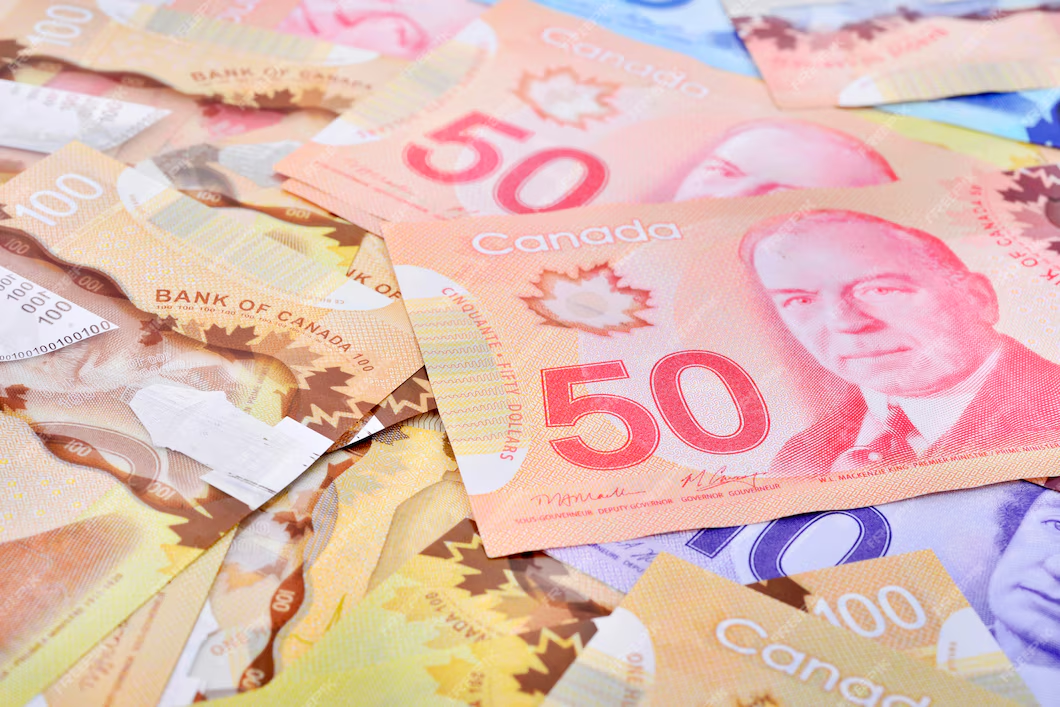Bank of Canada Takes a Pause, But Imminent Trade Risks Hint at More Cuts to Come
The Canadian Dollar advanced after the Bank of Canada (BoC) surprised the market by taking a pause from its rate-cutting cycle, keeping interest rates steady for the first time since it began easing last June. Although the move gave the CAD short-term relief, the BoC’s Monetary Policy Report emphasized continued trade tensions and economic uncertainties, hinting that the pause might be temporary. The central bank presented two scenarios: a mild slowdown if tariffs are relaxed, or a deep recession if trade disputes intensify. With rate cuts already partly reflected in markets, analysts expect further easing to come — perhaps as soon as June — once the direction of U.S. trade policy becomes clearer. KEY LOOKOUTS • The Bank of Canada’s hold on rates surprised some market expectations, providing near-term support to the Canadian Dollar, but the pause is widely regarded as temporary. • BoC policy perspective is extremely reactive to changing trade tensions, particularly U.S. tariff actions, which will significantly impact rate direction going forward. • Scenario 1 is premised on a smooth resolution of trade tensions with a transient dip in inflation, whereas Scenario 2 is predicting a deeper worldwide slowdown and Canadian recession should an all-out trade war materialize. • The OIS market already has 50bps of rate cuts priced in, anticipating a softer economic landing, but a further rise in trade risks may provoke even lower cuts. The Bank of Canada’s pause in cutting interest rates has provided the Canadian Dollar with some short-term relief, but deeper-seated economic risks imply the respite is likely to be short-lived. The central bank identified two potential scenarios for the economy: one in which trade tensions gradually fade, enabling inflation to anchor around the 2% target, and another in which a protracted trade war unleashes a sharp slowdown and Canadian recession. Markets already expect additional cuts, perhaps as early as June, based on how U.S. trade policy develops over the next few months. Since the BoC is holding back, global trade direction will probably determine its next policy action. The Bank of Canada kept rates unchanged, providing a short-term lift to the Canadian Dollar. But with continued trade risks and economic uncertainty, rate cuts are likely to resume soon, with markets looking to June for the next likely move. The BoC’s outlook continues to be highly sensitive to U.S. trade policy evolution. • The Bank of Canada (BoC) left interest rates unchanged, surprising the markets in its first rate pause since the rate easing cycle kicked off in June last year. • The Canadian Dollar (CAD) picked up, growing 0.7% relative to the U.S. Dollar after the rate hold. • The BoC identified prominent trade-related concerns and worldwide uncertainties in its Monetary Policy Report. • Two scenarios were presented: one with trade tensions softening, and the other with a prolonged trade war that results in a Canadian recession. • Inflation would fall to 1.5% in the less severe scenario but would temporarily rise to 3.0% if trade tensions intensify. • The market is already discounting 50 basis points of rate cuts, potentially beginning as soon as June. • Governor Macklem indicated the BoC stands poised to act “decisively” should the situation deteriorate, hinting that the suspension might prove transitory. The Bank of Canada has opted to leave interest rates unchanged, exercising prudence as it observes how trade tensions abroad will pan out. The break is providing the central bank with extra time to evaluate the risks confronting the Canadian economy, particularly with lingering uncertainty regarding U.S. trade policy. The move reflects that although the bank is in no hurry to further cut rates, it is still worried about what’s ahead. EUR/USD DAILY PRICE CHART CHART SOURCE: TradingView With the rate decision, the Bank of Canada also released two potential future scenarios for the economy. One would prefer a resolution to trade tensions in peace, which would see the economy gradually slow down before resuming stable expansion. The other is that the economy could experience a deeper downturn if trade tensions persist, which might trigger a recession. The signal is unmistakable: while the bank has stopped short for the time being, it stands ready to act if necessary to backstop the economy. TECHNICAL ANALYSIS USD/CAD pierced below crucial levels of support after the Bank of Canada left rates unchanged, reaffirming bearish pressure in the near term. The pair fell below its 50-day moving average, indicating a change in sentiment against the Canadian Dollar. Momentum oscillators such as the Relative Strength Index (RSI) are also trending lower, indicating possibility of more downside if the pair cannot regain traction above 1.3700. Traders will be monitoring closely for a firm break beneath the 1.3600 area, which could pave the way for more severe declines, particularly should economic news or trade events enhance the CAD’s prospects in coming weeks. FORECAST If tensions in global trade relax and Canadian economic data begin to stabilize, the Canadian Dollar might be able to sustain its strength in the short term. Softening or abolition of U.S. tariffs would also boost market sentiment, enabling USD/CAD to bounce back above major resistance points like 1.3700. And if growth or inflation surprises to the upper side, the Bank of Canada might postpone further rate cuts, providing a further boost to the CAD. On the negative side, if trade tensions intensify or U.S. tariffs rise, the Canadian economy may experience a more severe slowdown, prompting the Bank of Canada to lower rates earlier and more forcefully than anticipated. This would tend to weaken the CAD, sending USD/CAD higher towards resistance levels. A more precipitous decline in global growth or weak domestic data would put further pressure on the currency, creating space for a move above 1.3800.










